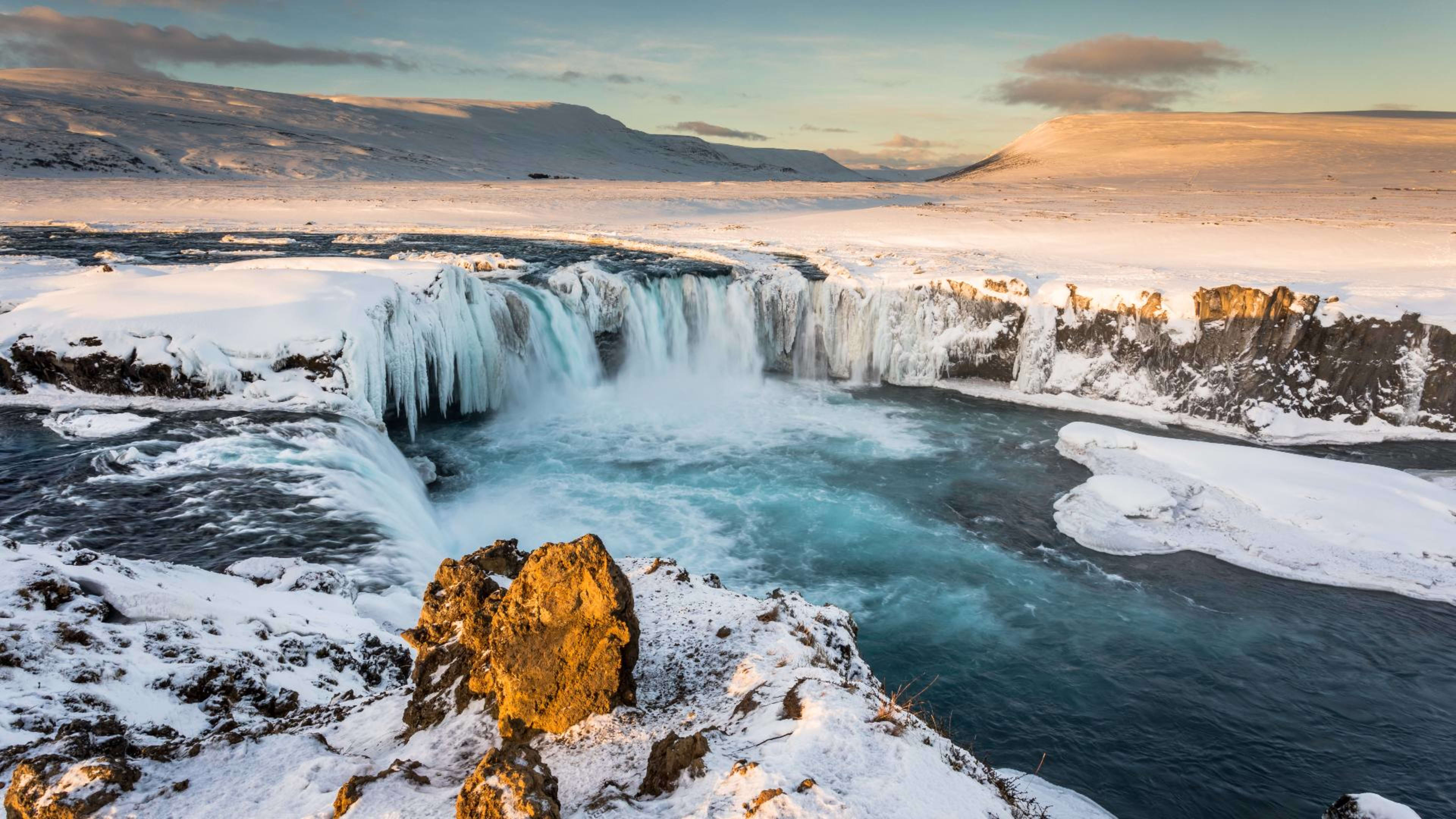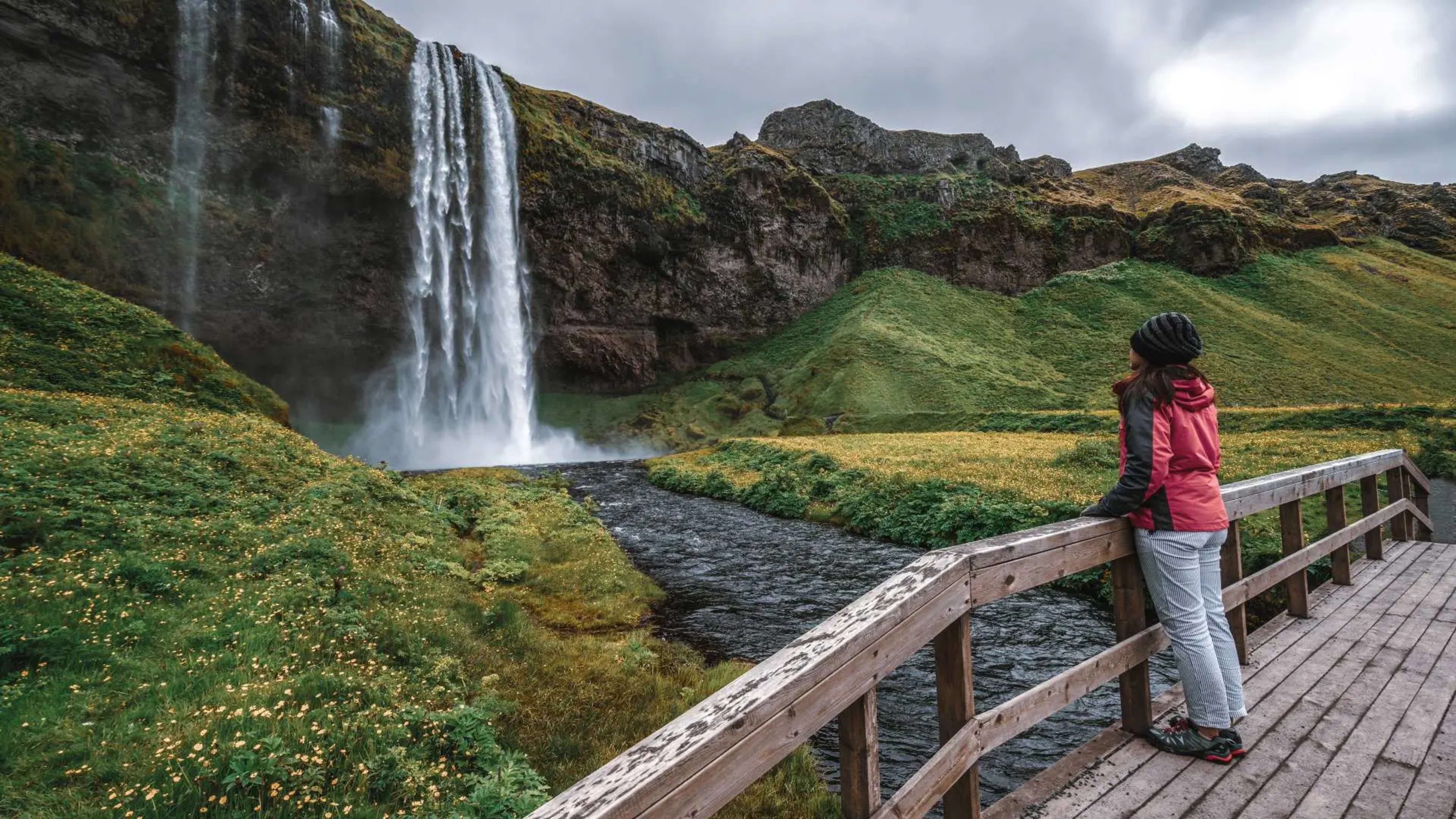Iceland is a fascinating country, rich in heritage and natural wonders. Just like its landscape and history, Iceland is multi-faceted and intrigues visitors from around the world.
Before you set off on your journey, learn more about its culture and history. And know what to expect in terms of the best things to visit and the best time to travel.
We’ve put together a guide to Iceland, detailed and useful, just for you.
- Look up Iceland vacation packages to get started with planning the trip of a lifetime.
About Iceland
Let’s start with the basic facts about Iceland. It is a unique island set in the northern Atlantic Ocean. Nicknamed the Land of Fire and Ice, Iceland offers an amazing landscape of glaciers and volcanoes.
Iceland has a population of only 350,000 inhabitants making it the most sparsely populated country in Europe. Nearly two thirds of Icelanders live in or around Reykjavík as it is the financial and cultural center of the country.
Around 75% of Iceland is uninhabited, including the highlands, glaciers, lava fields, and beaches. So there is plenty of tranquil and untouched places to visit!
Quick facts about Iceland:
- Capital: Reykjavík
- Currency: Icelandic króna (ISK)
- Time zone: Greenwich Mean Time (GMT) all year
- Language: Icelandic
- Religion: majority Lutheran
- Main industries: fishing, geothermal power, and tourism
- Drinking age: 20 years old
Our guide to Iceland continues with more about Icelandic history, weather, and wildlife below.

History
The Norse origin of the early settlers is what influenced the language and culture of Iceland today. Most of the evidence indicates that the first permanent settlers came from Norway and from parts of the British Isles where Viking settlements had been established.
According to The Book of Settlements (Landnámabók), Ingólfur Arnarson was the first permanent settler of Iceland, establishing himself there in 874. A few decades later, in 930 the settlers established their central parliament, the Alþing. It is still active today, making it the oldest surviving parliament in the world.
In the 1200s a pact was made with the King of Norway and later Iceland fell under Danish rule due to Scandinavian pacts and wars. It wasn’t until 17 June 1944 that Iceland was going to regain its independence. This national holiday is now celebrated every year.
Weather in Iceland
Is it always cold in Iceland? With a name like that, you would think so, wouldn’t you? But the climate in Iceland is milder than you may expect. Thanks to the Gulf Stream, Iceland enjoys a temperate oceanic climate with cool summers and relatively mild winters.
Icelandic weather is very changeable and it can happen fast too. This is why, when you’re visiting, you should always be prepared for unexpected weather. You may experience all four seasons in one day, so pack well to adjust your clothing at short notice.
The average summer temperatures in Reykjavík are 10-13°C (50–55°F). But you may encounter some warm days into the 20s°C (68°F +). In winter, expect temperatures to hover around 0°C (32 °F). In the north, they may fall to -10°C (14°F) or below.
What to pack, all year long, for a trip to Iceland:
- Lightweight under layers such as long-sleeved shirts and t-shirts
- Woolen sweaters and fleeces
- Rainproof and windproof coat (insulated for winter travel)
- Rainproof pants
- Sturdy walking or hiking shoes with woolen socks
- Warm hat, scarf, and gloves
Wildlife
While Iceland’s stunning landscape is the main reason people travel here from far and wide, there is also a variety of wildlife to witness. In fact, the water, sky, and land are teeming with beautiful animals!
Icelandic marine life is exquisite. Go on a boat tour to try to catch sight of the many types of whales, dolphins, and seals feeding around Iceland. The capital of whale watching in the country is the northern town of Húsavík.
All land mammals, except for the Arctic fox, have been brought by settlers to the country. These include the many, many sheep and the reindeer of East Iceland that all roam freely.

Finally, bird watchers will be pleased to hear that there are over 70 species that nest regularly in Iceland. This even includes some that do not breed anywhere else in Europe.
Up to about 10 million puffins spend their summers in Iceland. Find them on the high bird cliffs around the country, such as the Látrabjarg cliffs in the Westfjords. Also be on the lookout for harlequin ducks, Barrow’s goldeneyes, gyrfalcons, and Brünnich’s guillemots, among others.
Fun fact: Did you know that Iceland is one of the few places in the world without snakes?
Iceland’s natural beauty
One of the biggest draws of Iceland is its stunning and rugged natural beauty. You may be wanting to visit to be able to witness the tall peaks, windy cliffs, ice caps, and black beaches, among many other highlights.
Read a little bit more about these natural gems you can find in Iceland here.
Volcanoes
A relatively young land, geologically speaking, Iceland is located on both the Iceland hotspot and the Mid-Atlantic Ridge, which runs right through it. This location means that the island is highly geologically active with many volcanoes.
There are at least 30 active volcanoes in Iceland. In fact, Iceland’s volcanic activity made world news recently with the eruption of Eyjafjallajökull in March 2010. It disrupted international air traffic for some weeks.
Geothermal activity takes many shapes and forms too. They are an important part of Icelandic nature and include mud pools, steam vents, sulfur pits, and geysers.
You’ll also want to keep in mind the relaxing hot springs in which you can dip to warm up after a day of hiking or exploring. There are some ‘wild’ ones, but you can also visit spas and baths that tap into geothermal springs.
Geothermal power is also used for domestic and industrial purposes around the country.
Waterfalls
If you love to see majestic waterfalls of all shapes and sizes, Iceland is the country to visit. There are in fact thousands of waterfalls around the country, so you’ll have plenty to choose from.
You will generally find at least one or two waterfalls on itineraries including the Golden Circle, south coast or the Ring Road. But you may want to go off the beaten path and visit even more.
Here are our top 10 waterfalls to see in Iceland:
- Gullfoss, part of the Golden Circle
- Seljalandsfoss and Skógafoss, located on the south coast
- Svartifoss in Skaftafell
- Dettifoss in the Vatnajökull National Park
- Goðafoss in North Iceland
- Dynjandi in the Westfjords
- Hraunfossar waterfalls in the west
- Hengifoss in East Iceland
- Háifoss in the Eastfjords
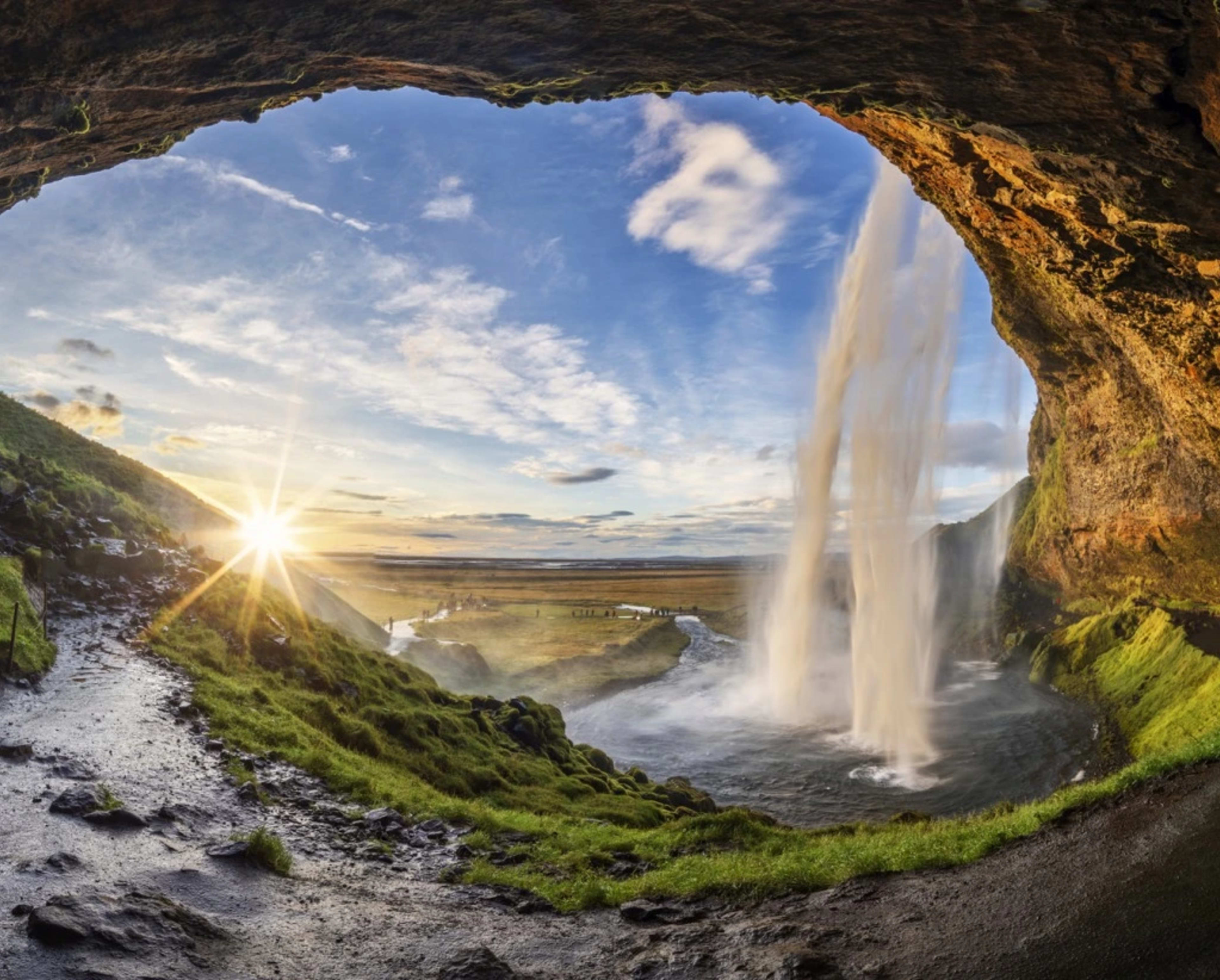
Glaciers
Iceland’s nickname as the Land of Fire and Ice comes less because of its climate and more because of its glaciers. The various ice caps, outlet glaciers, alpine glaciers, mountain glaciers, and ice streams bring the total of glaciers in Iceland to 269! They cover over 11% of its landmass.
The largest Icelandic glacier is Vatnajökull, which is 8,200 square kilometers and up to 1,000 meters thick in places. It is also the biggest of its kind in all of Europe!
- Learn all about the best glaciers to visit in Iceland.
The landscape of the island bears witness to the last Ice Age. And the powerful glacial torrents continue to shape the land, carving spectacular gorges into the lava landscape.
Black sand beaches
You may have heard about the black sand beaches of Iceland. If you’ve never witnessed those before, you’ll surely be awed by the stark color of the Icelandic coast.
Black sand occurs because of the volcanoes nearby. It is a mix of molten lava entering in contact with the water. The lava cools down so rapidly that it breaks up into sand instantly.
Some of the most famous black sand beaches include Reynisfjara and Diamond Beach (Fellsfjara), on the south coast, as well as Djúpalónssandur on the Snæfellsnes peninsula.
If anything, while you’re visiting Iceland, you’ll find the other colors of sand bizarre. Like the red sand of Rauðisandur in the Westfjords.
Be careful when walking along the beaches in Iceland. You should try to keep a safe distance from the shoreline due to rogue waves and strong undercurrents.
National parks
Iceland has 3 main national parks:
- Þingvellir
- Snæfellsjökull
- Vatnajökull
Þingvellir (or Thingvellir) is where the North American and Eurasian tectonic plates meet. It is an impressive sight and one of cultural importance too.

It was inscribed as one of Iceland’s UNESCO World Heritage sites because it is the original location of the Icelandic parliament, the Alþing.
Snæfellsjökull is located along the Snæfellsnes peninsula and is a must-see if you’re visiting the area. You’ll find Vatnajökull in the southeast. The glacier that makes up the national park is Europe’s largest ice cap and can be admired from a faraway distance.
Visiting the capital, Reykjavík
Reykjavík is the capital and largest city of Iceland, where nearly two-thirds of the country’s population lives. It is a lively and thriving city at the center of Icelandic culture, with fun activities and attractions for you to explore.
You’ll also find a range of excellent cafés and restaurants offering delicious international cuisine.
Whether you’re in town for a city break or staying the night before you tour the island, it’s worth taking the time to explore the capital.
- Related: Best towns & cities in Iceland to visit.
Here are the 10 best things to do in Reykjavík:
- Taste Icelandic cuisine
- Learn more about history at the National Museum of Iceland
- Walk along the seaside and see the Sun Voyager
- Dip in one of the city’s geothermal swimming pools
- Take in the view from the top of Hallgrímskirkja
- Try the most popular ice cream in the country
- In summer, hike up Mount Esja
- Sail to Viðey Island to see the Imagine Peace Tower
- Take the bus to Grótta Lighthouse for a relaxed day
- Visit Perlan and its Wonder of Iceland exhibition
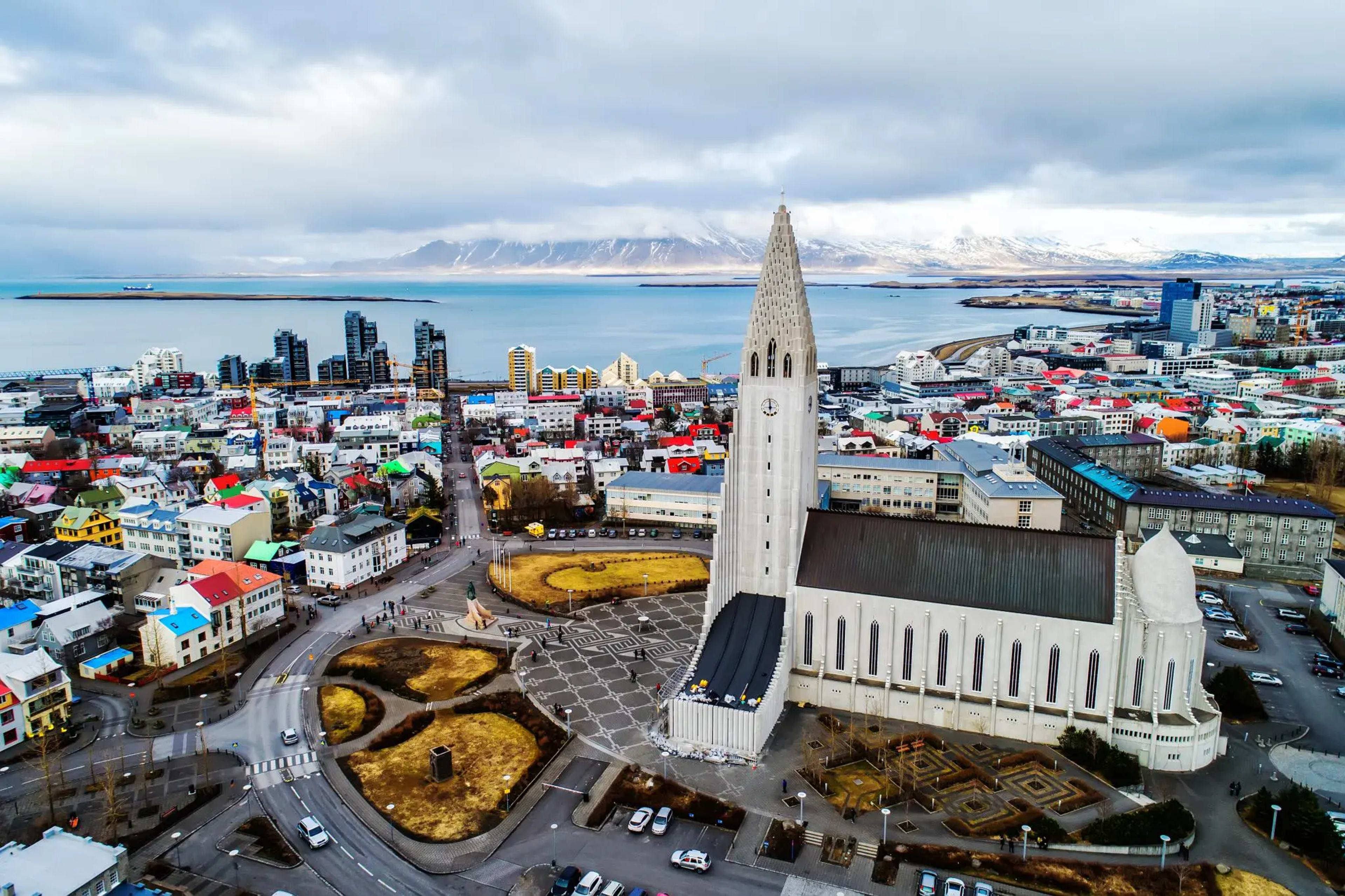
- Explore these Iceland vacation ideas & find your perfect one.
Music and culture in Iceland
We couldn’t write about Iceland without mentioning the amazing cultural scene of this small but vibrant country. You’ve likely heard about an artist or two from the Land of Fire and Ice.
And if you’re just dreaming of your future trip to Iceland, you can look up some of these to travel via art. It’ll keep you entertained until you can see the real thing in person!
Famous Icelandic musicians and bands
Boasting such world-famous artists as the queen of Icelandic music, Björk, and the popular indie band Sigur Rós, Iceland is clearly a musical country.
For your Iceland playlist, you’ll also want to add Of Monsters and Men, Kaleo, and Sóley, who are all making their mark around the world.
International artists often play in Iceland, while at the other end of the spectrum you will find that many pubs offer a variety of live music.
Literature in Iceland
Nowadays Iceland is known for its Nordic noir crime fiction books. But way back when, it was the Icelandic sagas that made their way into the world consciousness. They are a great way to learn more about the local mythology as most date back to the 12th and 13th centuries.
Then modern Icelandic literature was recognized in 1955 when Halldór Laxness won the Nobel Prize of Literature.
To travel to Iceland through books, pick up authors such as Thor Vilhjálmsson, Einar Kárason, Arnaldur Indriðarson, Yrsa Sigurðardóttir, and Auður Ava Ólafsdóttir, amongst others.
Best festivals and events to attend
Iceland is a lively nation with many celebrations. All year long, there are international festivals or smaller events you could attend to immerse yourself in the Icelandic cultural scene.
Here are the events and dates to remember:
- The midwinter festival of Þorrablót in January
- Winter Lights Festival in February
- Beer Day on 1 March
- Iceland Winter Games in March
- First day of summer in late April
- Reykjavík Arts Festival in June
- Seafarers’ Day in early June
- Iceland’s National Day on 17 June
- Secret Solstice Festival in late June
- Folk Music Festival in July
- Bræðslan in July
- Reykjavík Jazz Festival in August
- Reykjavík Culture Night and Marathon in August
- Pride in Reykjavík in August
- Réttir in September
- Reykjavík International Literary Festival in September
- Reykjavík International Film Festival in late September
- Iceland Airwaves in November
Northern Lights in Iceland
The Northern Lights are one of the biggest draws for travelers visiting Iceland in winter.
But what are Northern Lights, you ask? Also known as the Aurora Borealis, they are caused by the interaction of particles from the sun with the upper atmosphere near the North Pole. That reaction creates the wonderful light effects we know as Northern Lights.

We often get asked, “what is the best month to see Northern Lights in Iceland?” Well, there isn’t one month in particular. We do recommend visiting in winter for the best chances of sightings. That’s because you need a dark northern sky, which Iceland has plenty of at that time of year.
Wondering where to go to see the Northern Lights in Iceland? You could see them just about anywhere, even from the capital. But follow our top tips to put all the chances of sightings on your side:
- Visit in winter as the skies are darker at that time
- Head to the countryside if possible
- Stay up late as the best sightings occur between 10 p.m. and 2 a.m.
- Check the forecast as you’re looking for good weather conditions and clear skies
- Be patient and dress warmly to stay out in the Icelandic winter
- Book a fun outing like a cruise or bus tour to hunt for the Northern Lights
And always remember that this phenomenon is natural and so cannot be timed or guaranteed. There is always some luck involved!
Guide to Iceland – What and when to visit
Finding out what you want to visit and when you’ll travel to Iceland are the first two steps in the planning process. Below you’ll find some tips to pick the right season for your travels and our top tens of things to do and see during your visit.
What is the best month to visit Iceland?
Iceland is a beautiful and exciting country all year long. This is why Iceland Tours has created itineraries for summer and winter alike.
Only you can choose which is the best time for the adventure you have in mind. Fantastic activities and sights are available in both travel seasons and each one has different draws and benefits.
Exploring Iceland in summer
The summer is by far the most popular time to visit Iceland. There are also a wide variety of activities and festivals to attend, and the landscape is at its best. Hiking is an activity favored by locals and visitors, and you could even dip your toes in the sea.
Iceland’s stunning highland region opens in late June if you want to go off the beaten path. The Westfjords also become more accessible at this time of year.
The months of June, July, and August are the most popular as they enjoy the best and most stable weather of the year. During these months, you can enjoy the never-ending daylight thanks to the midnight sun. It means the days are long and you can explore to your heart’s content.
- Check out our summer tours to Iceland for more inspiration.
- Blog: Iceland in summer – must sees and must dos.
Exploring Iceland in winter
Due to the darkness and winter weather, the period between October and March attracts fewer visitors. But it is more and more popular!
In fact, there are some big draws to visiting at this time. You’ll enjoy a quieter side of Iceland, with less traffic on the roads and at the popular attractions. There’s less demand for accommodation and activities too.
- Check out these 5-day Iceland itinerary ideas, ideal for winter.
And don’t let the winter weather keep you away. Iceland in winter can be as enchanting as ever, with frosty waterfalls and snow-capped mountains.
While winter driving in Iceland can be more challenging, it is a great way to travel. You could discover the south coast or even drive around the Ring Road. You just need to be flexible and always check on the weather and road conditions before setting off each day.
The biggest attraction of visiting Iceland at this time of year has to be the Northern Lights. They are sure to be on many bucket lists! This natural phenomenon can best be enjoyed in darkness, which is why winter is ideal for sightings.
Best things to do and places to visit
Wondering what you should not miss while visiting Iceland? We’ve compiled it all for you. The best things to do, the best places to visit, and even the best activities or day tours to add to your itinerary.
Top 10 things to do in Iceland:
- Go hiking in national parks
- Relax and dip in hot springs
- Photograph the Icelandic wildlife
- Marvel at countless waterfalls
- Witness the Northern Lights in winter
- Learn about Icelandic folklore and legends
- Taste the Icelandic cuisine
- Admire the bobbing icebergs on glacier lagoons
- See the rock formations along the coast
- Explore the highlands in summer

Top 10 places to visit in Iceland:
- Reykjavík
- Golden Circle
- Jökulsárlón glacier lagoon
- Lake Mývatn
- Blue Lagoon
- Snæfellsnes peninsula and Snaefellsjökull National Park
- Vatnajökull National Park
- Vík í Mýrdal and its surrounding attractions
- Seljalandsfoss and Skógafoss waterfalls
- Akureyri
Enrich your stay even more with one or more of these fun activities:
- Go horseback riding
- Join an ice cave expedition
- Take a helicopter tour
- Hike on top of a glacier
- Snorkel between the tectonic plates
- Drive a snowmobile in winter
- Watch for whales or Northern Lights on a cruise
- Walk “Into the Glacier”
- Sail onto the glacier lagoon
- Visit the Friðheimar greenhouse
- Kayak by Sólheimajökull glacier
Traveling with the family
Iceland is a great destination to visit with your family. In fact, there is something here for all ages. And Iceland is very family-friendly, with festivals, activities, and restaurants for all.
If you want to travel to Iceland with young children, we recommend visiting in summer. This isn’t just about the school holidays, but also about the way you’ll be able to explore. There is more daylight to take advantage of at this time and more kid-friendly activities available too.
Here are our recommendations for top family adventures in Iceland:
- Walk through lava caves and tunnels
- Hike to an abandoned farm at Kleif
- Learn about geology at the Perlan
- Ride an Icelandic horse
- See the wild reindeer in East Iceland
- Go puffin and whale watching
- Visit the Háafell goat farm
- Try the flight simulator at FlyOver Iceland
- Attend the Children’s Culture Festival in April
- Let them try the slides at the Reykjavík swimming pools

- Check out these epic family trips in Iceland.
Hiking in Iceland
Iceland is a fantastic location for hikers, amateur or experts alike. If that is the reason you’re visiting this Nordic nation, you’re in for an unforgettable adventure.
You could hike Mount Esja outside Reykjavík or take on trails in the countryside. A popular multi-day hike is the one at Laugavegur in the highlands. The national parks are also ideal for days of walking.
The best time to visit Iceland for this outdoor endeavor is between June and September. It is during these summer months that the paths are accessible. With the longer daylight hours, you can also take full advantage of the trails and Iceland’s natural beauty.
Please always be careful as a hiker to not put yourself in danger and always be ready for the weather conditions.
How to explore Iceland
There are many ways to travel around Iceland. It’ll all depend on your personal tastes and requirements. You could go on a guided or self-guided vacation. Read more below.
Budget
Is Iceland expensive to visit? How much money do you need per day in Iceland? These are frequently asked questions that we answered in our expert blog post about the subject.
But the short answer is that it is possible to travel to Iceland on a budget. With Iceland Tours, you get good local deals and the options to pick your preferences in terms of accommodation, activities, and car hire.
Self-drive
Iceland is the perfect destination for a road trip. Taking the wheel means you can go at your own pace. Stop whenever you want to take in the breathtaking views or to visit attractions.
Are you thinking of touring the Ring Road all the way around Iceland? Read our experts’ guide: How long does it take to drive around Iceland.
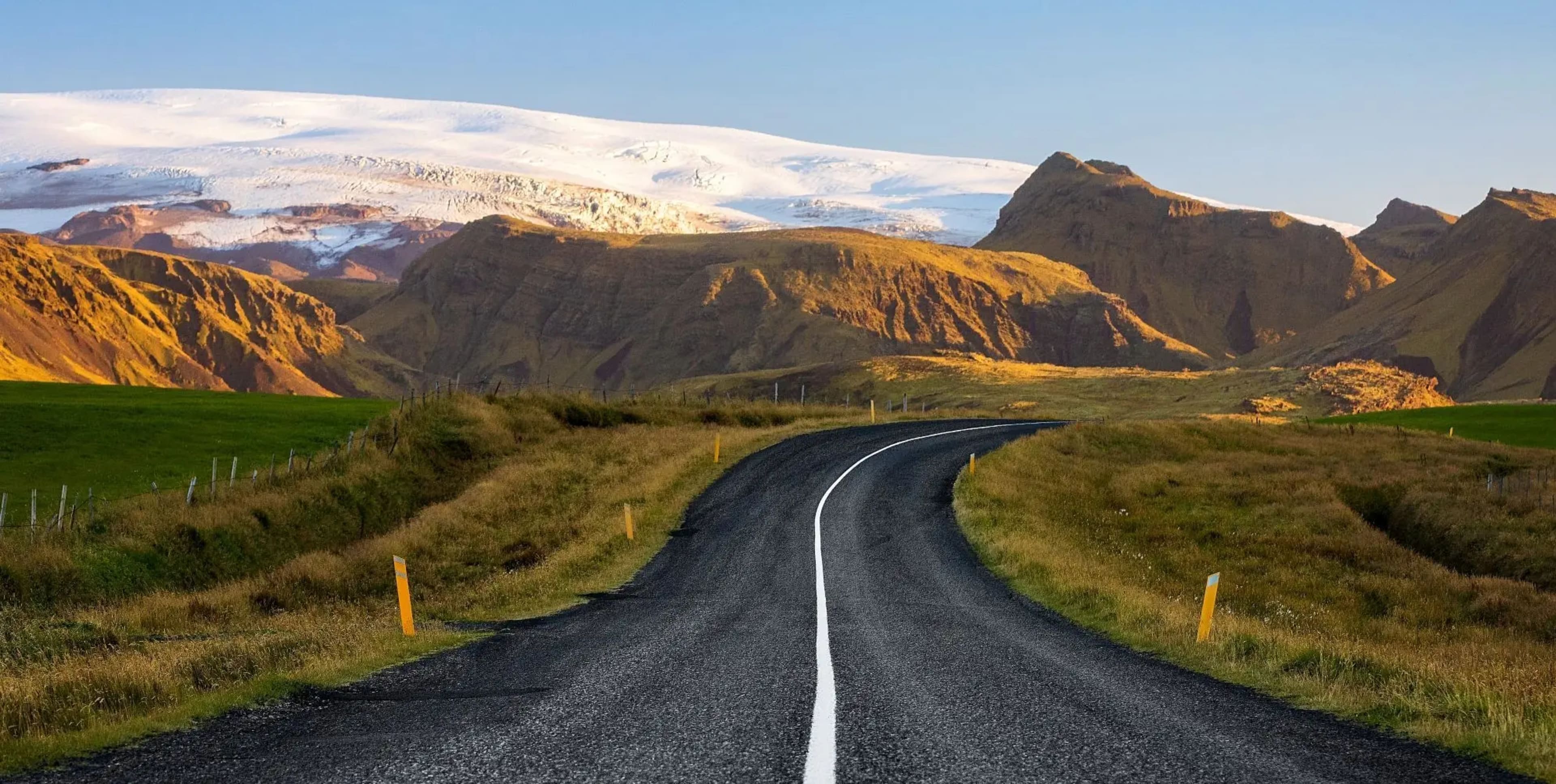
Driving in Iceland is an adventure that you won’t regret! Especially when you book with Iceland Tours as you’ll get in-car Wi-Fi, unlimited mileage, collision damage waiver, and more as part of your booking.
- Browse self-drive tours of Iceland.
Privately guided tours of Iceland
A private tour of Iceland means you’ll get the undivided attention of your own expert guide who will also act as your personal driver. Iceland Tours will even handpick a guide for you to make sure they match your interests.
You then sit back and relax. Enjoy the views and all the insight your guide will bring you about Iceland. They will also be able to tailor your tour even more chatting with you every day about your preferences.
- Book a private tour of Iceland to enjoy the company of a local guide.
Camping tours of Iceland
A camping trip to Iceland can be the same as a normal self-drive tour, but you get to sleep closer to nature. You’ll stay in camping grounds around the region you picked or the whole country if you’re touring the Ring Road.
Iceland Tours will always include camping gear so you don’t have to lug your own items on the flight over. Your gear will be made up of a tent, sleeping bag, mattress, cutlery, stove, and cool box.
You only have to cover the camping fee, which is usually between 1500 and 3500 ISK per night per person.
- Check out camping tours in Iceland.

City break
If you’re looking for a fun but short getaway, Iceland is still excellent for that kind of stay. Come explore Reykjavík, the buzzing capital, and take day tours to famous attractions. This is great if you want to stay put for your getaway or only have a few days to explore.
There is so much to visit in Reykjavík, as you may have read above, and many fun activities to add to your itinerary.
Take a tour of the Golden Circle or go relaxing at the Blue Lagoon. Enjoy whale watching, a visit to the Westman Islands, or adventure yourself “Into the Glacier” or in a lava tunnel.
- Find an Iceland city break to suit you.
- Related: How long do you need in Iceland?
Itineraries
You’ve learned so much about Iceland and maybe you’re ready to create or pick an itinerary. If you’re wondering how many days you need to see Iceland, we recommend at least a week for a tour of the island.
With less time than that, you may want to focus your adventures around one or two specific regions instead.
Here is our suggestion for a 7-day itinerary:
Day 1: Arrive in Iceland
Depending on when you fly into Iceland, you’ll have the rest of the day to explore Reykjavík. The capital city is a treasure trove of interactive museums, fun activities, cozy cafés, and excellent restaurants.
Day 2: Drive north to Akureyri
Today you start your road trip. You’ll pass through Borgarfjörður and Skagafjörður. The latter is known for its horse breeding so keep an eye out for the fluffy and sturdy Icelandic horses. Along the way, make a pit stop by the beautiful Hraunfossar waterfalls.
Day 3: Lake Mývatn area
Drive to the Lake Mývatn Nature Reserve, one of Iceland’s most inspiring areas. On the way, don’t miss the impressive Goðafoss as well as the Námaskarð geothermal area to see bubbling mud pools and hissing steam vents. There are two craters worthy of your time too, Víti and Hverfjall.
Day 4: The Eastfjords
Today you drive through East Iceland and discover the Eastfjords. Visit small history museums, try local seafood, and enjoy the charming villages. At times, you’ll see that the road hangs precariously on the mountain slope providing stunning views below.
Day 5: Highlights of the southeast
After passing various outlet glaciers from Vatnajökull you’ll arrive at Jökulsárlón glacier lagoon. This enchanting sight with bobbing icebergs is a must-see! We then recommend spending some time in the Skaftafell area. This natural oasis, surrounded by glaciers and stark black sand plains, is ideal for hiking.

Day 6: The Golden Circle
Today you discover the highlights of the famous Golden Circle. See geysers, admire the stunning Gullfoss waterfall, and marvel at the geology of Þingvellir National Park.
Day 7: Departure
And just like that, it’s time to say goodbye to Iceland. Depending on when you’re flying home, you may be able to squeeze in some last few sights in Reykjavík.
Congratulations you made it to the end of this article! Do you feel like an expert on Iceland now?
When you’re ready to book your own adventure to the Land of Fire and Ice, browse our Iceland vacation packages to find the one that suits you.


